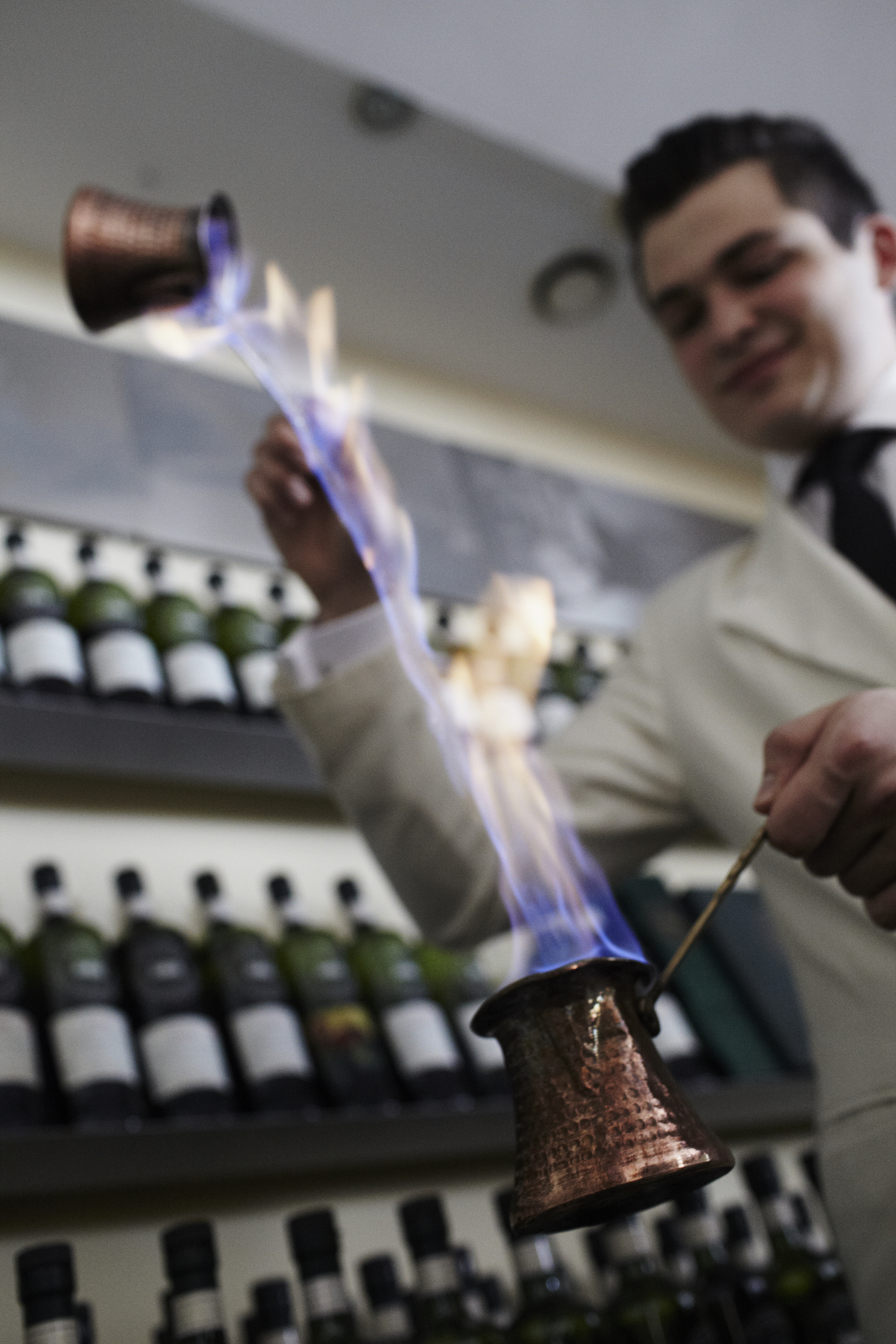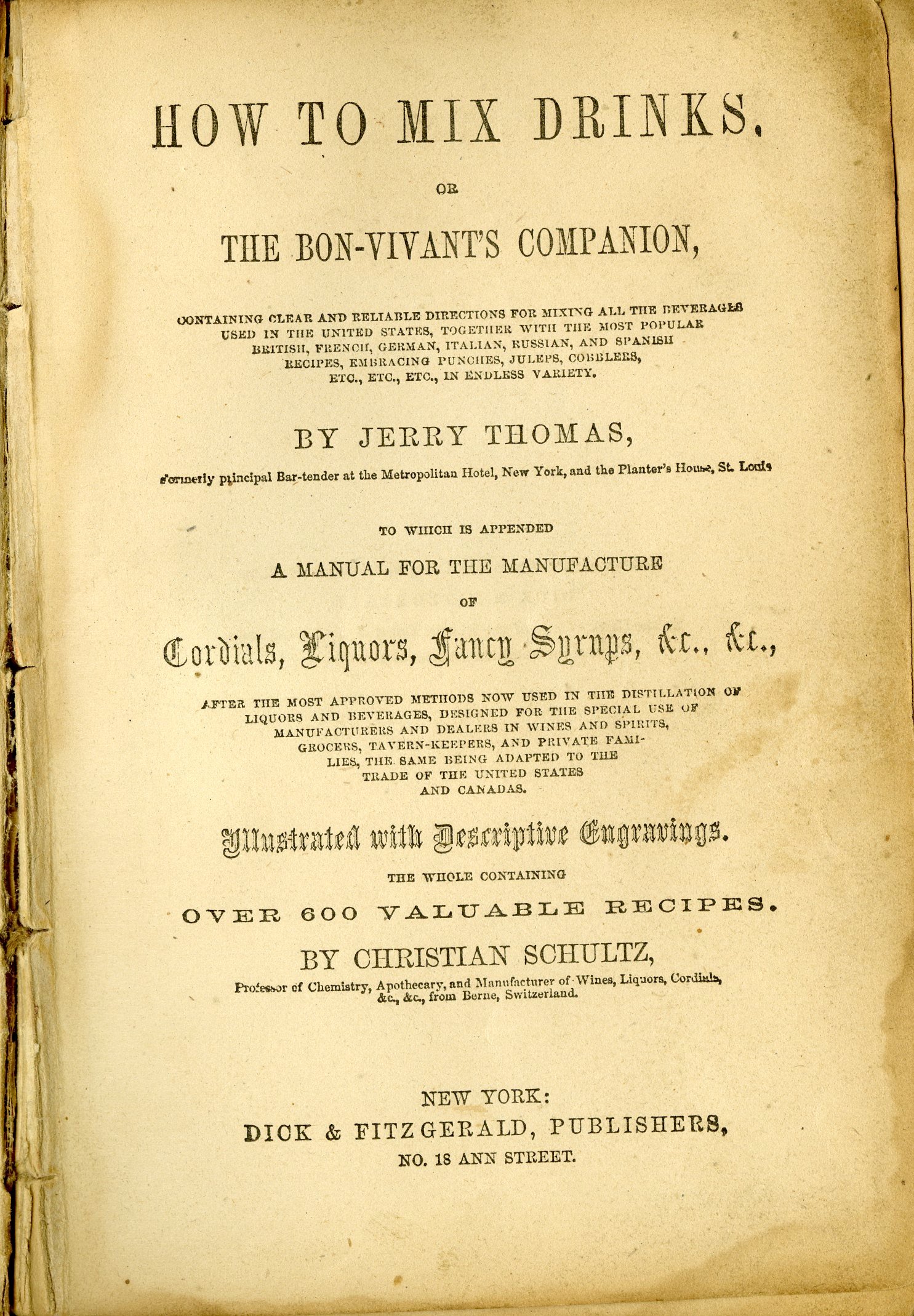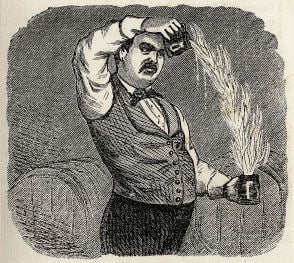Words by Gavin D Smith, Originally from Unfiltered #58
When Tom Cruise took to ‘flair bartending’, juggling bottles, glasses and shakers during the 1988 film Cocktail, he was actually following in a long tradition of cocktail bar showmanship. One of the originators was Jeremiah ‘Jerry’ P Thomas, who is also credited with writing the first American drinks book How to Mix Drinks, or The Bon Vivant’s Companion, published in New York in 1862.
Jerry Thomas is a fascinating figure, a pioneering bartender, adventurer, businessman and author, who lived a colourful life during a notably colourful period of American history. He was born during 1830 or 1832 in Sackets Harbour, upstate New York, and began his bar room career in New Haven, Connecticut, before heading to California the year after the great ‘gold rush’ started there in 1848. He worked bars, may have prospected for gold and managed a minstrel show, before returning to his native east coast during 1851. In New York City, Thomas established a saloon in the same premises as Barnum’s American Museum, on the corner of Broadway, Park Row, and Ann Street in Manhattan, but was soon on his travels again, working in hotels and bars in in St Louis, Chicago, San Francisco, Charleston and New Orleans.
 During this time, he honed his flamboyant bartending act, creating a public persona which included wearing diamond rings and cufflinks and kid gloves, while he was known to collect art as well as enjoying bare-knuckle boxing bouts. Invited to tour Europe, he arrived there
During this time, he honed his flamboyant bartending act, creating a public persona which included wearing diamond rings and cufflinks and kid gloves, while he was known to collect art as well as enjoying bare-knuckle boxing bouts. Invited to tour Europe, he arrived there
with a set of solid-silver bar tools!
Liquid fire
Central to Thomas’s theatrical approach to mixing drinks was his signature cocktail the Blue Blazer, which he developed at the El Dorado gambling saloon in San Francisco. The Blue Blazer is made by lighting whisky in one cocktail jigger and pouring it into a second jigger containing boiling water. The liquid is then transferred rapidly between the two jiggers several times until mixed, at which point sugar and lemon are added. Thomas liked to use cask strength Scotch whisky to create his Blue Blazer, and as he later wrote: “If well done this will have the appearance of a continued stream of liquid fire.” Thomas was largely responsible for elevating the art of bartender to the status
of a respected professional, earning the nickname ‘The Professor’. While working as head barman at the Occidental Hotel in Chicago, he was reputedly earning $100 per week; rather more than the vice-president of the United States. Never a notably modest man, Thomas described himself as “Jupiter Olympus of the Bar”.
A blessing to mankind
His lasting contribution to drinks culture was his 1862 tome, which carried the impressively all-encompassing title of How to Mix Drinks:  Or, The Bon-vivant’s Companion, Containing Clear and Reliable Directions for Mixing All the Beverages Used in the United States, Together With the Most Popular British, French, German, Italian, Russian, and Spanish Recipes, Embracing Punches, Juleps, Cobblers, Etc., Etc., Etc., in Endless Variety. This was the first attempt to collect cocktail recipes, write them down and publish them in book form, and it contained many which had previously only enjoyed oral transmission as well as some of Thomas’s own creation. He went on to update the title several times during his lifetime, adding new discoveries and inventions.
Or, The Bon-vivant’s Companion, Containing Clear and Reliable Directions for Mixing All the Beverages Used in the United States, Together With the Most Popular British, French, German, Italian, Russian, and Spanish Recipes, Embracing Punches, Juleps, Cobblers, Etc., Etc., Etc., in Endless Variety. This was the first attempt to collect cocktail recipes, write them down and publish them in book form, and it contained many which had previously only enjoyed oral transmission as well as some of Thomas’s own creation. He went on to update the title several times during his lifetime, adding new discoveries and inventions.
In the preface to his Companion, Thomas wrote that: “It struck us that a list of all the social drinks – the composite beverages, if we may call them so – of America, would really be one of the curiosities of jovial literature; and that if it was combined with a catalogue of the mixtures common to other nations, and made practically useful by the addition of a concise description of the various processes for brewing each, it would be a blessing to mankind.”
The book remains in print to this day, and includes what is often considered to be the ‘first’ cocktail, the whiskey sour, with Thomas providing its earliest written attestation:
- (Use a small bar-glass)
- Take 1 large tea-spoonful of powdered white sugar dissolved in a little Seltzer or Apollinaris water
- The juice of half a small lemon
- 1 wine-glass of Bourbon or rye whiskey
- Fill the glass full of shaved ice, shake up and strain into a claret glass. Ornament with berries.
The greatest bartender in American history
Back in New York City once again, Thomas served as head bartender at the Metropolitan Hotel, before opening his own bar at Broadway and 22nd Street, which, according to Herbert Asbury in a December 1927 article for H L Mencken’s American Mercury, “… became one of the most celebrated saloons in the history of the city”. After seven years there, Thomas sold the property and moved to 1239 Broadway, where he presided for a further eight years, before making his final move downtown in 1875, establishing Thomas’s Exchange at No.3 Barclay Street.
Thomas died of a stroke on December 15, 1885, having lost a great deal of money in Wall Street investments. Such was his fame by this time that newspapers all over the US carried obituaries, including the New York Times, which noted that he was “...at one time better known to club men and men about town than any other bartender in this city, and he was very popular among all classes”. He was buried at Woodlawn Cemetery in the Bronx, New York. Herbert Asbury described Jerry Thomas as “the greatest bartender in American history”
and painted a memorable portrait of him, writing that:
“He was indeed an imposing and lordly figure of a man…portly, sleek and jovial, and yet possessed of immense dignity. A jacket of pure and spotless white encased his great bulk, and a huge and handsome moustache, neatly trimmed in the arresting style called walrus, adorned his lip and lay caressingly athwart his plump and rosy cheeks. He presented an inspiring spectacle as he leaned upon the polished mahogany of his bar, amid the gleam of polished silver and cut glass, and impressively pronounced the immemorial greeting, ‘What will it be, gentlemen?’”








